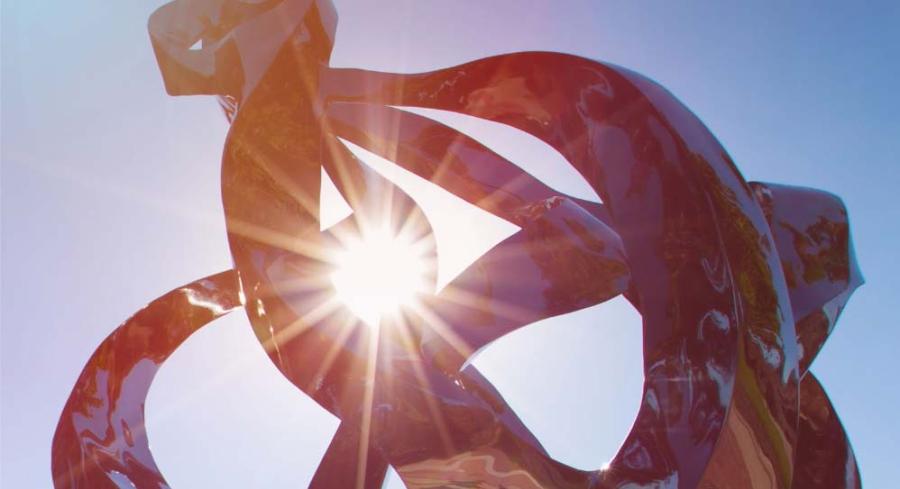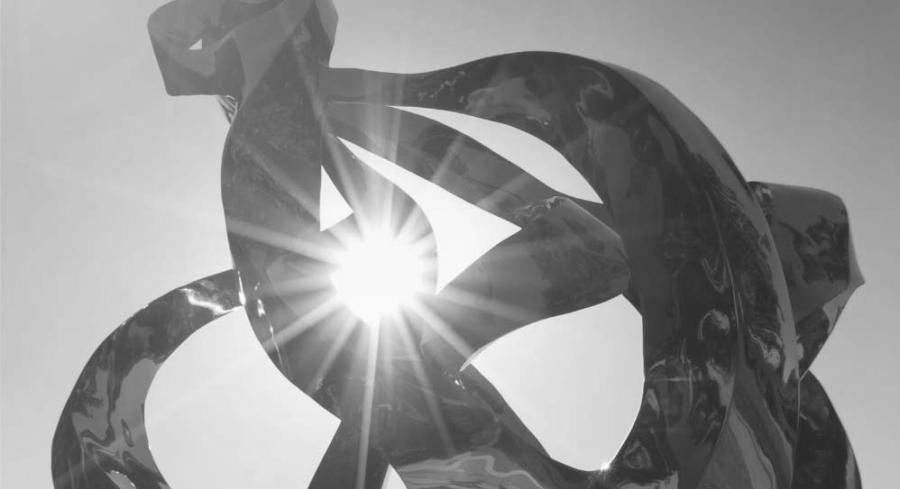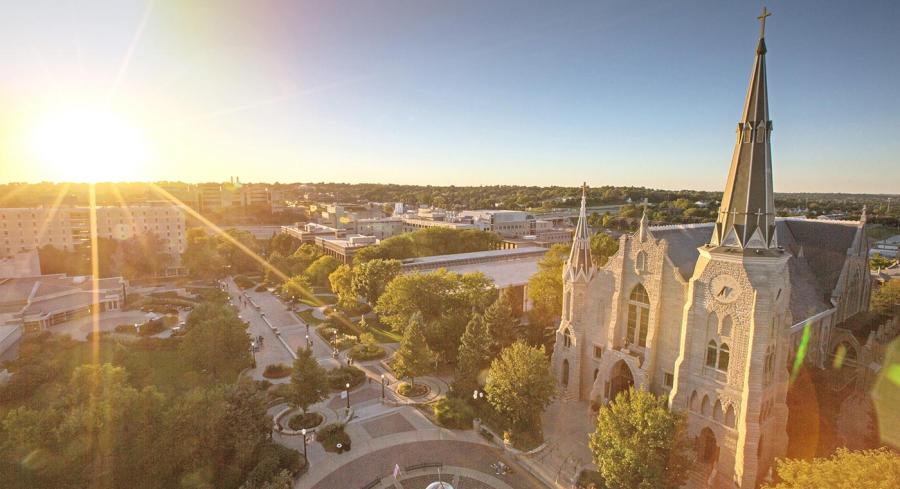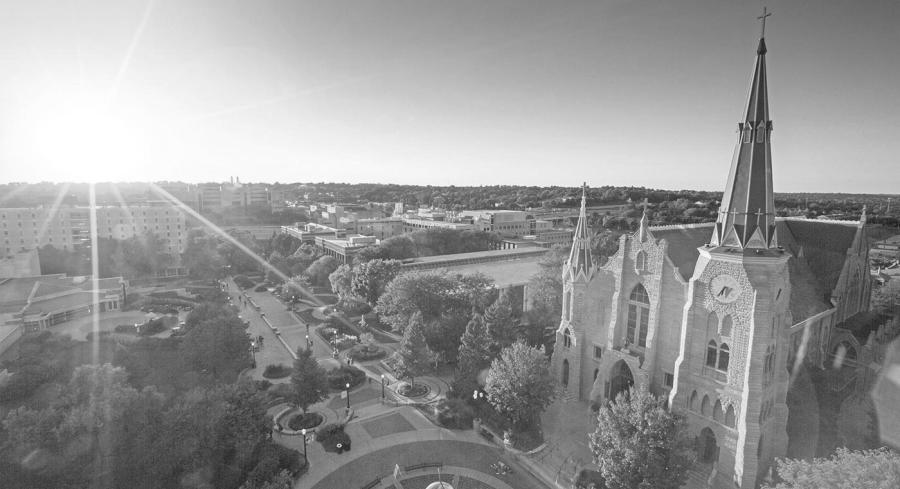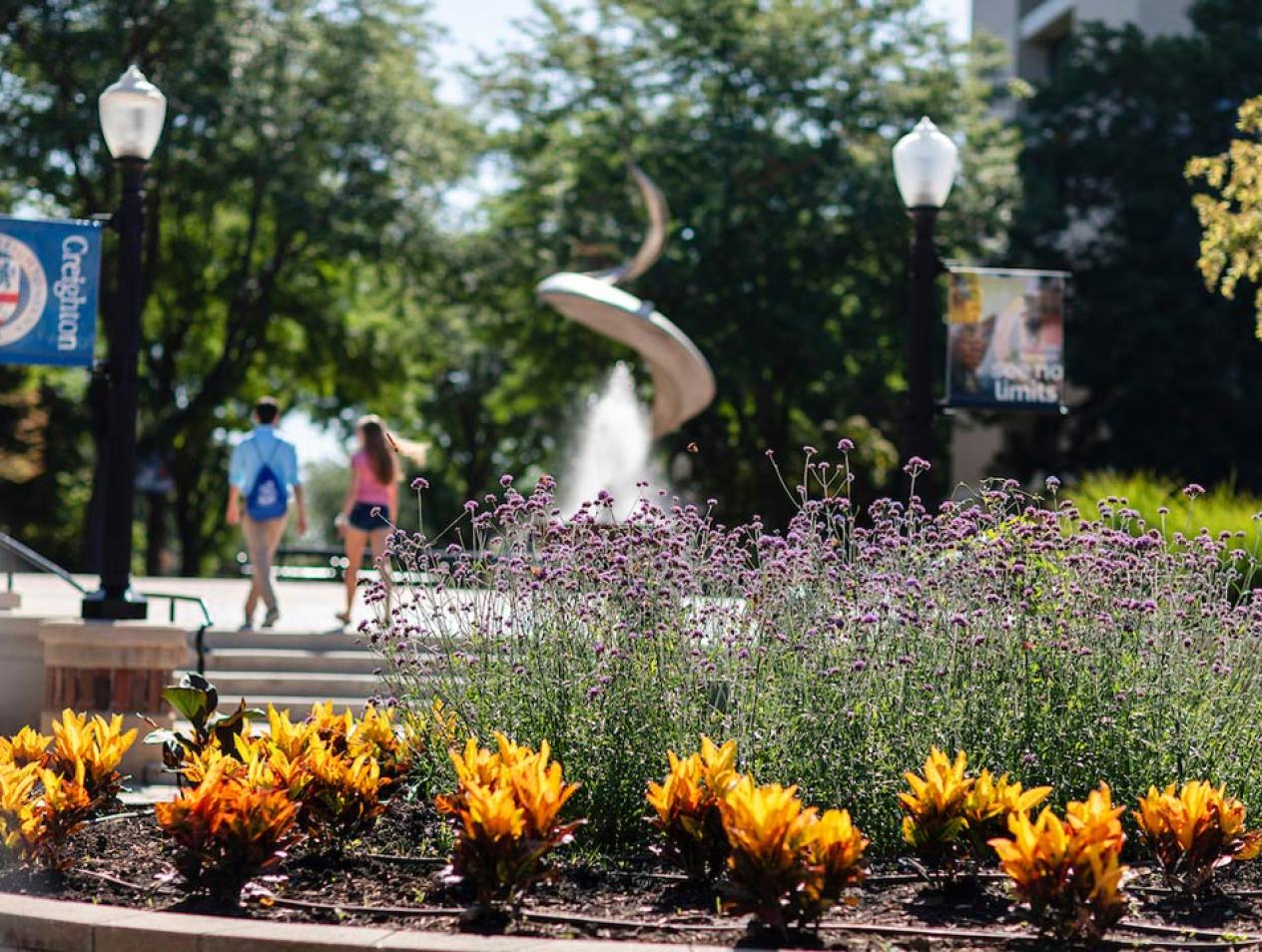2024 Symposium
35th Annual Symposium on Jewish Civilization
The Jewish Diaspora and The Promised Land: Origins, Developments, Future Prospects
Sunday, November 3 - Monday, November 4, 2024.
Co-hosted by
- The Klutznick Chair in Jewish Civilization, Creighton University
- The Kripke Center for the Study of Religion and Society, Creighton University
- The Harris Center for Judaic Studies, University of Nebraska-Lincoln
- The Natan and Hannah Schwalb Center for Israel & Jewish Studies, University of Nebraska at Omaha
- The Jewish Federation of Omaha
Abstracts
Nadav Berman
University of Haifa
“‘Synagogue Judaism’ as Conceptual Tool for Examining Jewish Peoplehood”
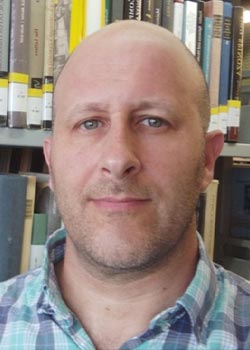
One of the main dilemmas of the State of Israel as Jewish and democratic is the relationship between religion and state: Do all Israel’s citizens of all religions enjoy equal rights and dignity? Are Diaspora Jews of all denominations treated equally by Israel’s government and its authorized institutions? The answer to both questions, for sure, is not straightforwardly affirmative. Many conclude that Israel should thus “separate immediately and completely between religion and state” according to the American or the French model, prevent any authority from the chief rabbinate and any other rabbinic governmental body, with the intention that a totally secular state will fulfill the desired egalitarian vision.
This expectation, though, has some shortcomings that many Israelis recognize, consciously or intuitively. Most importantly, it is not clear how Israel would sustain its character as a Jewish-democratic nation-state. Here are three enduring examples: the legal establishment of Shabbat as the default for the weekly national rest day (Hours of Work and Rest Law, 1951), the Rabbinic Courts Jurisdiction (Marriage and Divorce) Law (1953), and the Law of Return (1950). Problematic, imperfect, and loosely enforced as these laws are (off-rabbinate marriage, e.g., are not criminalized), they indicate that a majority of Israelis wish to maintain Israel as Jewish and democratic.
It seems that a majority of Jewish Israelis feel that absent a minimal institutionalization of Judaism in Israel, it would be transformed sooner or later – due to work-seeking immigration pressures or mass Palestinian return immigration – into a Christian or Muslim state. This concern for a unification of “Church and State” or “Mosque and State,” I suggest, is the elephant in the Israeli room, which enables the ongoing collective democratic choice of Israeli society to approve the very limited status, and surely imperfect from a liberal perspective, that Rabbinic Judaism, or “Synagogue Judaism” (henceforth: SJ) has in Israel.
However, this very idea, SJ, is virtually absent from the scholarly field that investigates Jewish peoplehood, including the more pragmatic works (e.g., the books Israel and the Family of Nations and State and Religion in Israel). This lacuna is the jumping board for the present paper. After an introduction whose essence was described above, the paper will (1) propose a topography of several constitutive elements of SJ as it was formed in the Talmudic era and clarify how SJ is profoundly connected with Diaspora Judaism and thus often sidelined from the Israeli mainstream; (2) discuss how SJ indeed affiliates with religious Zionism, and (3) contend that SJ differs from secular autochthonous “Israelism” (e.g., Canaanism) on the one hand and on the other hand from the rising “neo-Sadducism” that wishes to build a Third Temple at all costs.
Abraham David
Jewish National Library of Israel, Jerusalem
“The Jews of Egypt and Their Ties with the Land of Israel in the Sixteenth Century”
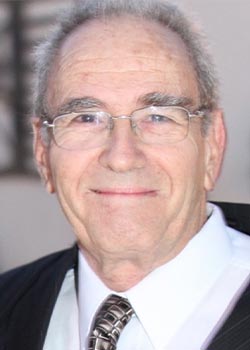
The sources and data mostly from the Cairo Genizah documents lead clearly to the conclusion that at the end of the Mameluk period and the beginning of the Ottoman period, namely, from 1517, the Jews of Egypt maintained firm ties with the Jewish community in the Land of Israel, especially in Jerusalem and Safed. These ties found factual expression in the massive and apparently continuous support that the Jews of Egypt provided for the welfare of the Jews in the Land of Israel, both the community and individual Jews.
It seems that although the links between the Jews of Safed and Damascus were reinforced with the rise of Ottoman rule in the Land of Israel, the connection of the Jews of that city with Egypt did not cease, but was reflected among other ways in reciprocal commercial ties and requests for financial aid.
The severe economic crisis that struck the Empire from the last quarter of the sixteenth century had some influence on the network of relations among the Jews of the countries in it, and therefore the heads of the Safed community observed in the first decade of the seventeenth century: “Egypt has lost our brothers who were a pillar of support to us and in it there is no Jewish Mua’llim or courtier.”
Paul Finkelman
Marquette University School of Law
“The Other Promised Land: The Golden Medina and the Escape from Official Anti-Antisemitism”

This paper focuses on how the United States created an “alternative” to the biblical promised land. In the age of the American Revolution the United States became the first nation in the world where Jews were equal citizens at the national level. Jews were officers in the Revolutionary army and later the Navy (both were impossible in England and elsewhere in Europe). Half of the first class at West Point was Jewish (one out of two students). They could vote in every state and faced no legal disabilities on account of their religion, although a few states maintained a religious test for officeholding after the 1790s.
But at the federal level they held offices starting with the Washington administration. While Jews could not hold office in Maryland under state law until the 1820s, in 1821 President Jefferson appointed Reuben Etting to be the U.S. Marshal for the state. Jews were elected to public office on the eve of the Revolution and continued to be increasingly elected after that. They could not enter Parliament until the late 1850s, but in the United States they were never barred from federal offices and were elected to the House and the Senate in the 1840s and in state and local governments well before that. Jews could practice all professions in every state. Jews could not be barristers in England until the 1830s while they practiced law in the new nation shortly after the Revolution.
They could not attend Oxford or Cambridge in England, but shortly after the Revolution a Jew served on the Board of Trustees of Columbia University. For most American Jews the United States was the "promised land." The paper will briefly note the twentieth century evolution when leading American Jews, such as Louis Brandeis and Felix Frankfurter, were Zionists although they could never imagine living anywhere but the United States, while other important Jews, such as Lessing Rosenwald and Rabbi William Fineshriber, opposed creating a Jewish state precisely because they believed the United States was the Promised Land.
Menachem Keren-Kratz
Independent scholar, Israel
“The State of Israel, Eretz Israel, or the Diaspora: Jewish Orthodoxy’s Debate Over the Settlement in Palestine”

The concept of Jewish Orthodoxy emerged in the early nineteenth century. It sought to differentiate between Jews who were fully committed to the centuries-long religious lifestyle and the new sort of Jews who adopted modern norms, pursued broader general knowledge, no longer obeyed halachah, and sought religious reform.
A second trend that developed in that century was nationalism, namely, the collectivity of people who shared the same values and cultural heritage. It was manifested in the 1848 Spring of Nations, a series of failing rebellions that eventually led to the downfall of the old empires and the rise of nation-states. At the same period, Jews also began considering themselves a nation worthy of their own territory. Facing this new concept of Jewish nationalism, three major trends emerged within Jewish Orthodoxy. Each justified its stands using biblical, Talmudic, and kabbalistic reasoning.
The first was voiced by rabbis who claimed that Jews can fully accomplish their national, religious, and spiritual quests only in Eretz Israel. This trend led to the establishment of the Mizrachi movement. Today, over a century later, this concept is known as Religious Zionism, which encourages all Jews to settle in Israel.
Another trend regarded Jewish nationalism as heresy and totally condemned it. The contemporary groups that follow this claim today include anti-Zionist communities such as Satmar and Neturei Karta. They claim that save for a symbolic group of devout Jews who serve as guardians of the holy land, the Jewish people should remain in the Diaspora until the coming of the Messiah. The third group consists of Orthodox Jews who denounced Jewish nationalism and particularly Zionism but encouraged observant Jews to settle in Palestine for religious and practical reasons. This group, which today is known as Haredi, was represented by the social and political movement of Agudat Israel.
Victoria Khiterer
Millersville University
“Let My People Go: The Struggle of Kyivan Jews for Immigration to Israel”
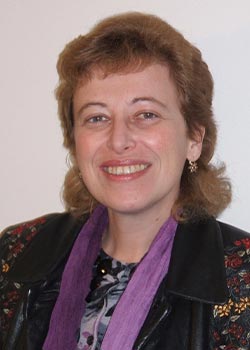
My paper will analyze the struggle of Kyivan Jews for immigration to Israel and the support of Israeli diplomats for their efforts, as well as for the continuation of Jewish religious and cultural life in Kyiv. My work is based on secret police (KGB) reports, which I found in Kyiv and Israeli archives. Kyiv had one of the largest Jewish populations in the Soviet Union. However, Jewish scholarly and cultural institutions were closed in Kyiv, as well as in the entire Soviet Union, from the late 1940s due to state antisemitism.
KGB reports show that many Kyivan Jews responded enthusiastically to news about the establishment of the State of Israel and wanted to immigrate there. But Jewish emigration was not allowed from the Soviet Union until the early 1970s and was very restricted thereafter. Kyivan Jewish refuseniks organized meetings of protest and memorial meetings in Babyn Yar, the largest Holocaust site in the Soviet Union. Soviet authorities dispersed these unauthorized meetings and arrested their participants.
While the Soviets suppressed Jewish national life, Israeli politicians and diplomats helped Kyivan Jews preserve their religion and culture. Israeli diplomats delivered to Kyivan Jews matzah, Jewish religious books, and literature about Israel. They celebrated with Kyivan Jews religious holidays. Documents show that the connections of Kyivan Jews with the State of Israel were never completely suppressed by the Soviet authorities, and Israelis helped Kyivan Jews continue their national and cultural life even under conditions of state antisemitism in the Soviet Union.
Aaron Koller
Yeshiva University
“Language and Identity in Israel and Diaspora: Ancient Perspectives on a Modern Problem”
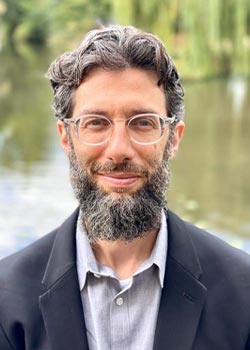
The Hebrew language has had multiple identities over the past 3000 years: as the vernacular of a small ethnic group, a religious language, and a. marker of identity, among others. In contemporary American Jewish culture, Hebrew is usually little more than a token rather than a language, and the vast majority of American Jews across the denominational lines cannot conduct a conversation in Hebrew. Is this a potentially fatal problem for the community or a sign of its strength in a new English-speaking Homeland? Does the flowering of translations into English of all Jewish literature, from the Zohar to the Talmud to modern. texts, reflect a profound engagement with the culture or bespeak a superficial attachment that may not stand the test of time?
A look back at the history of Jewish Diasporas can help inform our thinking on such issues. The language has carried emotive, political, and demographic power from the time of Bar Kokhba and the Rabbis to the Mishnah, through the far flung Jewish traders and rabbi of the Middle Ages, and. into the period of the enlightenment that saw the rise of Zionism in the nineteenth century. This paper will survey some of the explicit thinking on the function of language throughout this time, as. well as data on actual function and usage of Hebrew in various communities. As we will see, the modern. English-speaking situation is unparalleled among pre-modern Jewish communities that survived, but does have parallels in communities that disappeared into the mists of history. The significance of Hebrew for Jewish cultural survival is hard to overstate, and American Jews rush headlong into the translation industry at their own peril.
Daniel Lasker
Ben-Gurion University
“‘Zionism’ Before Zionism: 2000 Years of Jewish Attachment to the Land of Israel”
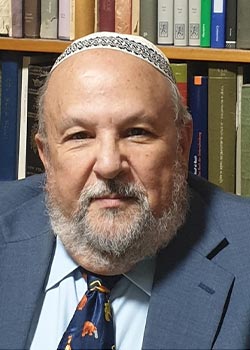
Although political Zionism began only at the end of the nineteenth century, Jews throughout the ages have felt a close connection to the Land of Israel. Although Jewish exile from the Land of Israel is thought to have begun with the destruction of the Second Temple (70 CE), there was always a Jewish presence there. In addition, even though most Diaspora Jews remained at a distance from the Land for 2000 years until the rebirth of the State of Israel, there were a number of organized groups and individuals who actualized their yearnings by moving to the Land of Israel and establishing communities there. Perhaps the first such group were the ninth and tenth century Karaites and their Mourners of Zion movement. Judah Halevi arrived in 1141, only to die soon thereafter. In 1211 or so, 300 French rabbis were reported to have moved en masse to the Land of Israel. In the sixteenth century, Safed became a major center made up mostly of expellees from Iberia (or their descendants). In the early modern period, there were immigrations from Eastern Europe among both Chasidim and their opponents. This talk will review these various pre-Zionist “Zionist” movements and discuss the motivations behind immigration to and residence in the Land of Israel in the almost two millennia from destruction to rebirth.
Martin Shichtman
East Michigan University
“Reimagining Jewish Masculinity in the Films of Adam Sandler and Sacha Baron Cohen”
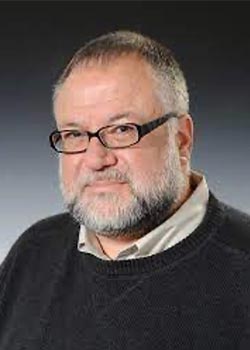
From maligned comedies to critically praised dramas, Adam Sandler and Sacha Baron Cohen have performed complex negotiations with the visual culture of Jewish masculinity, venturing between stereotypical images of the emasculated Jewish man and the hypermasculine New Jew. In a post-Holocaust landscape, Sandler and Baron Cohen have complicated contemporary issues of Jewish identity, including questions of ethnicity, religious engagement, nationalism, and tensions between Israeli and American Judaism. This paper focuses on Sandler’s You Don’t Mess with the Zohan and Cohen’s The Spy, texts that function as counterpoints for imaginings of Jewish masculinity through the lens of the Mizrahi male, a figure of representational contradictions. Sandler’s Zohan illuminates the work of a man who, throughout his cinematic and television career, has embraced the notion that he is a Jew and whose self-fashioning frequently locates toughness in queerness and queerness in being tough. On the other hand, Baron Cohen’s The Spy examines the subject position of the Jewish subaltern body in its relation to structures like Mossad, which, like Israel itself, creates inequities—social, economic, racial, and sexual.
Amir Segal
Hebrew University of Jerusalem
“Homeland Run: Israeli Baseball and American Transmigrants”
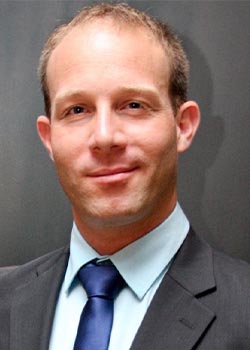
This paper addresses an aspect of cultural transfer and transformation by immigrants, focusing on the case of Israeli baseball, brought to Israel by Jewish migrants from the United States. As such, it examines cultural transfer as part of the transnational activities of transnational migrants. The analysis is based on interviews with 20 Jewish migrants from the United States to Israel who are engaged in Israeli baseball — as players, coaches, administrators, etc. — as well as five Israeli-born players who are also engaged in the sport. This study contributes to our understanding of transnational migration by drawing attention to the ways in which the experiences of transnational migrants are shaped by recreational activity and how transnational migrants' activities affect their host county. This occurs via transnational cultural diffusion, mediated in this case by a “critical community” of American Jews. Israeli baseball provides Jewish migrants from the United States with a means to identify with Israel as well as a sense of transnational belonging and, counter intuitively, eases their acculturation to Israeli society.
Yossi Turner
Schechter Institute of Jewish Studies, Jerusalem
“Diaspora, Homeland, and the Future of the Jewish People”
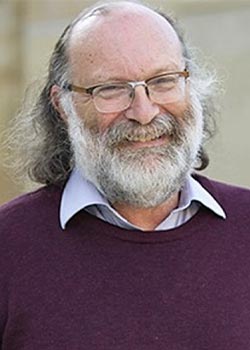
This paper involves a view of Jewish existence in present day Israel and the contemporary Diaspora, considered along with a theological, cultural, and historical evaluation of the conditions necessary for the continued existence of the Jewish people.
I will suggest an understanding of Jewish existence as one that can flourish so long as it maintains a balance between the influences coming from its inner diachronic, multi-generational discourse and those that that come from its synchronic relation to the civilization that dominates each particular present.
The paper will then subject the differing aspects of Jewish life in contemporary Israel and the present day Diaspora to the conditions necessary for the long-term continuation of Jewish existence as established in the tension between "inner and outer" in the preceding discussion. I will highlight the role played by the traditional form of Jewish self-interpretation known as midrash in mediating the difference between "inner and "outer" through the ages. This point will be invaluable insofar as I maintain that modern and particularly post-modern civilization has reversed the roles played by the "inner and outer," so that the Jews’ first frame of reference in the present is almost entirely drawn from the outer-non-Jewish civilization, with the inner diachronic forms of Jewish existence residing mostly on the horizon of one's consciousness.
On this backdrop I will claim that the test of viability for Jewish life, in Israel and in the Diaspora, is to be found in the extent to which the Jewish culture being created in each might provide for a return to the interpretive mediation between "inner and outer" that characterized Judaism through the ages, but that the means for doing so will necessarily be radically different in both settings. I will also make suggestions as to how this might be accomplished.
Hana Waisserova
University of Nebraska Lincoln
“Women Diaspora: Testimonials and their Precarious Ethos and Pathos”
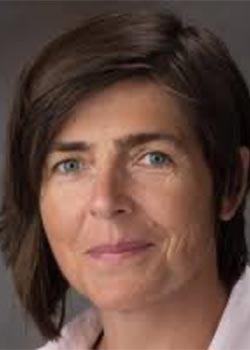
This presentation focuses on autobiographical narratives of women Holocaust survivors who for a variety of reasons eventually left the country of their birth, Czechoslovakia, and settled abroad in Diasporic Jewish communities or non-Jewish societies and were published abroad. These accounts of their survival and their resettlement, all published with significant delay, offer many incentives to rethink “The Jewish Diaspora and the Promised Land: Origins, Developments, Future Prospects.” Often dismissed in their homeland or their emigré communities, these biographies include testimonials by Heda Kovály, Edith Bauer, Zdenka Fantlová, Helga Weiss-Ho¹ková, and Franci Rabinek Epstein. These accounts are intimate, physical, emotional, and gendered stories of survival and exile; their problematic reception reveals the often dismissed ethos and misjudged pathos of women’s voices as well as lasting problematic neglect of the Holocaust memory and precarious uneasiness about women Holocaust survivor accounts in general.
Motti Zalkin
Ben-Gurion University
“‘An Eye Gazes toward Zion?’ Post-Soviet Jewish Immigrants and the ‘Promised Land’”

The collapse of the Soviet Union in the late 1980s marked the beginning of a new era in terms of Jewish immigration. Over the course of only seven years, approximately one million six hundred thousand Jews crossed what was known until then as the "Iron Curtain.” However, unlike previous waves of immigration, these Jews were not expelled from their country and did not escape the terror of pogroms. They immigrated of their own free will. The same goes for the potential immigration destinations. In fact, each one of these immigrants could set foot almost anywhere in the Western world, from New Zealand in the south to Sweden in the north, from the State of Israel in the Middle East to the United States in North America, and of course to any country in Central and Western Europe. And precisely because of the combination of these two elements, it was one of the defining moments in modern Jewish history, in which the dilemma that accompanied millions of Jewish immigrants from Eastern Europe since the end of the nineteenth century -- whether to immigrate to the "promised land," that is, the Land of Israel, or to replace one exile with another one, a certain type of another "promised land" -- had a decisive impact on the political, economic, social, and cultural world of the entire Jewish people in the years to come. In my lecture I will examine some lesser known aspects of this wave of immigration, among other things the multidimensional perception of concepts such as "The Promised Land"; “stability” vs “ transience,” and “Jewish cultural identity” in the world view of the first and second generation of these immigrants.
Motti Zalkin
Ben-Gurion University
“‘An Eye Gazes toward Zion?’ Post-Soviet Jewish Immigrants and the ‘Promised Land’”

The collapse of the Soviet Union in the late 1980s marked the beginning of a new era in terms of Jewish immigration. Over the course of only seven years, approximately one million six hundred thousand Jews crossed what was known until then as the "Iron Curtain.” However, unlike previous waves of immigration, these Jews were not expelled from their country and did not escape the terror of pogroms. They immigrated of their own free will. The same goes for the potential immigration destinations. In fact, each one of these immigrants could set foot almost anywhere in the Western world, from New Zealand in the south to Sweden in the north, from the State of Israel in the Middle East to the United States in North America, and of course to any country in Central and Western Europe. And precisely because of the combination of these two elements, it was one of the defining moments in modern Jewish history, in which the dilemma that accompanied millions of Jewish immigrants from Eastern Europe since the end of the nineteenth century -- whether to immigrate to the "promised land," that is, the Land of Israel, or to replace one exile with another one, a certain type of another "promised land" -- had a decisive impact on the political, economic, social, and cultural world of the entire Jewish people in the years to come. In my lecture I will examine some lesser known aspects of this wave of immigration, among other things the multidimensional perception of concepts such as "The Promised Land"; “stability” vs “ transience,” and “Jewish cultural identity” in the world view of the first and second generation of these immigrants.
Shlomo Zuckier
Princeton University
“Atonement and the Land in Early Biblical Interpretation: Land of Israel and Diasporic Perspectives”
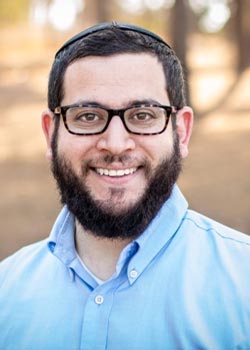
This paper considers the biblical theme of atonement for the land and its reception throughout Second Temple and rabbinic Judaism, in texts composed both within the Land of Israel and the Diaspora. No previous study has considered the history of interpretation of this theme in early Judaism or its significance for senses of Land and Diaspora.
The paper will find that the biblical phenomenon of people atoning for the land first expands throughout Second Temple literature and is then supplanted in rabbinic literature by the inverted concept of the land atoning for people.
This study of atoning for the land can serve as a conceptual access point to appreciate ritual concepts of how sin defiles sancta and/or people and can be purged from it. It also touches on issues of how people and earth interrelate and affect one another in important, even existential ways.
The topic touches on a variety of central issues across the period: conceptions of Temple – existing or not, legitimate or not—valuation of the Land of Israel and patriotism; conceptions of atonement, whether it is primarily achieved through sacrificial means or not; and the perspective of both Land of Israel and Diasporic texts on the Land. This paper situates the matter of land atonement as a through line that connects these issues and interpretive communities, demonstrates the contrasts between them, and notes the creative interpretations applied in this context.


